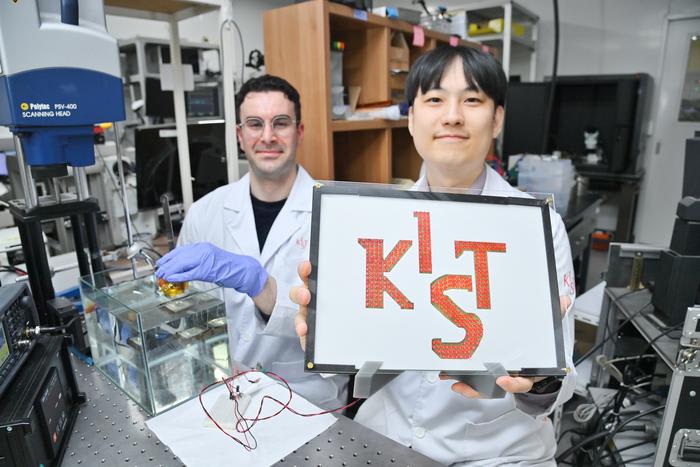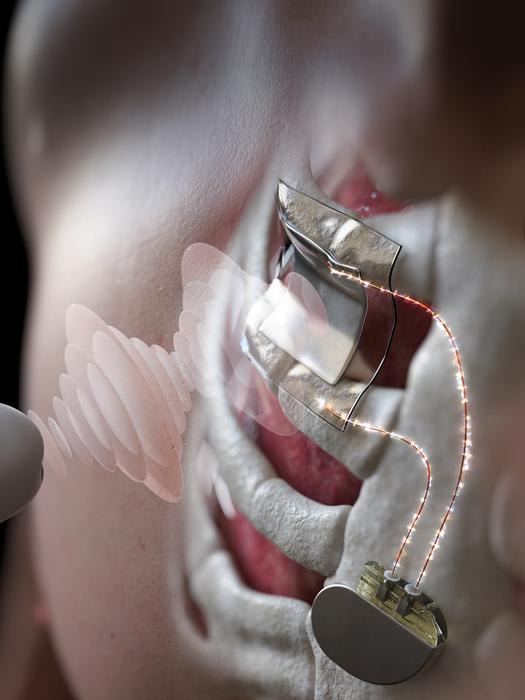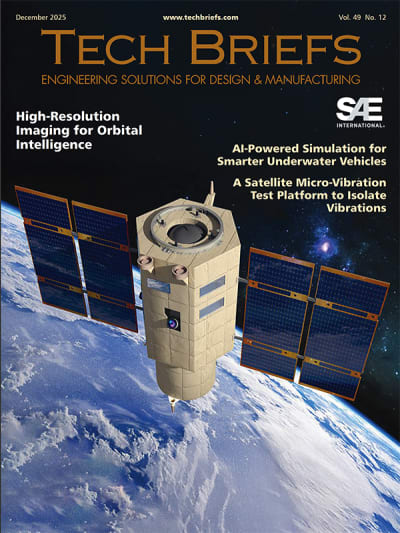
With the increasing demand for underwater and implantable medical electronics, a stable and continuous power supply is essential. However, conventional wireless charging methods (such as electromagnetic induction and radio frequency-based charging) used in smartphones and wireless earphones suffer from short transmission distances, low energy transfer efficiency in biological tissues, and electromagnetic interference. To overcome these limitations, researchers are now considering the use of ultrasound as a new wireless power transfer technology. Ultrasound has the advantage of being human-friendly and less absorbed by tissues, allowing for more reliable energy transfer in implantable and skin-adherent devices. As a result, wireless charging technology utilizing ultrasonic energy is emerging as the next generation of power transfer.
A research team led by Dr. Sunghoon Hur of the Electronic and Hybrid Materials Research Center at the Korea Institute of Science and Technology (KIST) and Professor Hyun-Cheol Song of Korea University has developed a biocompatible ultrasonic receiver that maintains its performance even when bent. The receiver overcomes many of the limitations of existing wireless power transmission methods while improving biocompatibility and is expected to be applied to next-generation wearable and implantable electronic devices. The researchers also demonstrated wireless charging of batteries by receiving ultrasonic waves, which is an important step toward commercializing the technology.

In particular, the researchers dramatically improved the power conversion efficiency compared to conventional ultrasonic receivers by using high-efficiency piezoelectric materials and a unique structural design. By designing a stretchable and biocompatible ultrasonic receiver that conforms closely to the curves of the human body while achieving stable power conversion, they were able to transmit 20 mW of power at a distance of 3 cm underwater and 7 mW at a depth of 3 cm from the skin. This is enough power to continuously power low-power wearable devices or implantable medical devices.
The findings are expected to help accelerate the commercialization of ultrasonic-based wireless charging technology for underwater electronics and implantable medical electronics. In particular, it is expected to provide a new paradigm for providing safe and continuous power to low-power medical devices such as implantable pacemakers, neurostimulators, and wearable sensors. It is also expected to be applied not only to medical devices, but also to underwater drones and marine sensors that require long-term power supply.
"Through this research, we have demonstrated that wireless power transmission technology using ultrasound can be applied practically," said Hur. "We plan to conduct further research for miniaturization and commercialization to accelerate the practical application of the technology."
Here is an exclusive Tech Briefs interview, edited for length and clarity, with Hur.
Tech Briefs: What was the biggest technical challenge you faced while developing this biocompatible ultrasonic receiver?
Hur: The challenge was to achieve a balance between mechanical flexibility and energy conversion efficiency. Devices built on rigid substrates typically receive ultrasound efficiently and deliver high output. However, when using flexible substrates — which are beneficial to implants that conform to soft, curved tissues — the performance drops significantly. Since implantable applications demand flexibility to accommodate body movements, overcoming this trade-off was a critical part of the development.
Tech Briefs: Can you explain in simple terms how it works please?
Hur: The device converts ultrasound waves — essentially mechanical vibrations — into electricity through a mechanism known as triboelectricity. When ultrasound hits the device, a top surface layer vibrates, leading to repeated contact and separation. This movement generates electric charges, which are collected and converted into usable current. That current is then used to wirelessly charge an implanted battery — without any wires, coils, or heat.
Tech Briefs: You’re quoted in the article I read as saying, “We plan to conduct further research for miniaturization and commercialization to accelerate the practical application of the technology.” My question is: Do you have any set plans for further research/work/etc.? If not, what are your next steps?
Hur: For commercialization, we must ensure the device’s long-term stability under real physiological conditions. While our current prototype shows promising short-term performance, extended reliability data should be followed. Additionally, any medical application must meet rigorous regulatory standards. To that end, we are redesigning the device using materials that are already approved for biomedical use. We’re also preparing for clinical pathways and actively seeking collaborations with industrial partners to scale up production and move toward practical applications.
Tech Briefs: Is there anything else you’d like to add that I didn’t touch upon?
Hur: Although the device was designed with implantable medical electronics in mind it also performs well in underwater environments. This makes it a strong candidate for wireless power transmission in submerged settings — where traditional electromagnetic-based systems suffer from severe attenuation. Applications could include autonomous underwater vehicles, remote sensors, or submerged communication systems, all of which could benefit from a reliable and efficient ultrasonic energy delivery platform.
Tech Briefs: Do you have any advice for researchers aiming to bring their ideas to fruition (broadly speaking)?
Hur: My advice is simple: don’t try to do everything alone. Meaningful innovation often stems from open discussions, feedback, and teamwork. Much of what I’ve achieved comes from close collaboration with mentors and colleagues — especially Professor Hyun-Cheol Song at Korea University, who co-led this research with me. Surround yourself with people who inspire and challenge you, and don’t hesitate to seek help — that’s how impactful research evolves.

